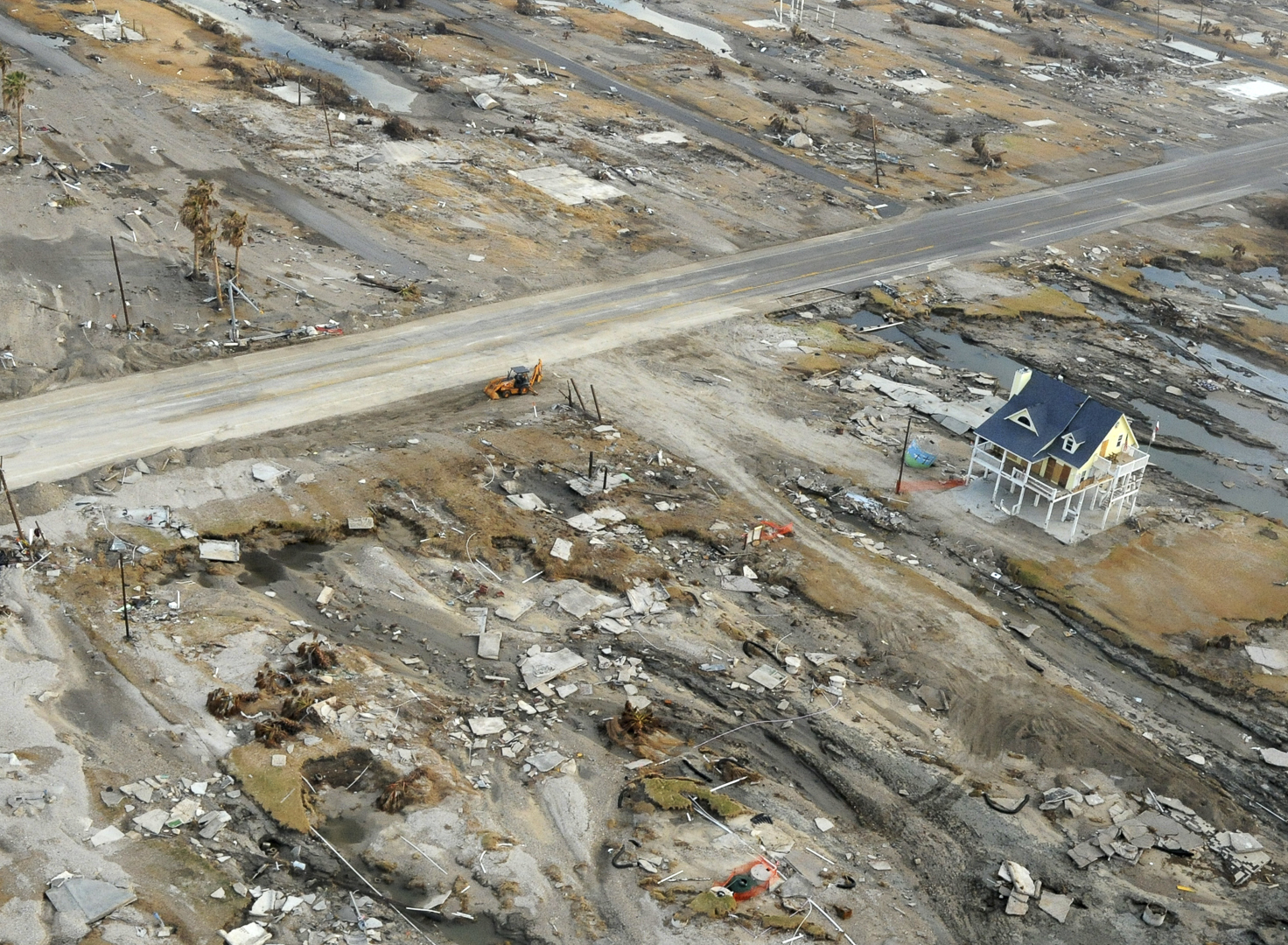Excerpt:
A plan to wall off Houston and nearby industry from flooding caused by hurricanes will cost tens of billions of dollars. Will it be enough?
Plans for one of the world’s biggest and most expensive flood barriers were born in a second-floor apartment here in this city on the Gulf of Mexico, as water 4 meters deep filled the street below. In September 2008, Bill Merrell, an oceanographer at Texas A&M University, Galveston, was trapped with his wife, daughter, grandson, and “two annoying chihuahuas” in the historic building he owns. Outside, 180-kilometer-per-hour winds generated by Hurricane Ike rattled windows and drove water from the gulf and Galveston Bay into the city.
As saltwater swirled through the shops and restaurants downstairs, Merrell sat in his office and sketched plans for a project he hoped would put an end to the storm-driven flooding that had repeatedly devastated this part of Texas.
It was an ambitious vision: Seventy kilometers of seawalls rising 5 meters above sea level would stretch the length of Galveston Island and beyond. Enormous gates would span the 3-kilometer-wide channel through which ships pass in and out of Galveston Bay. The defensive perimeter would seal off not just Galveston, but the whole bay, with Houston at its far end, protecting more than 6 million people and the country’s largest collection of chemical plants and oil refineries.
Though Merrell had spent decades studying ocean currents and storm surges, he had no engineering experience. But as he watched the murky waters soak the city, including his own carefully restored 19th century landmark, he decided there had to be a better way. “The Dutch would never put up with this,” he said to his wife.
Today, that first brainstorm has morphed into a $31 billion plan from the U.S. Army Corps of Engineers, the nation’s builder of mammoth water infrastructure. The state of Texas has embraced the idea, creating a taxing district to help pay its share. In July, Congress authorized the Corps to proceed—though it has yet to appropriate money for construction…









